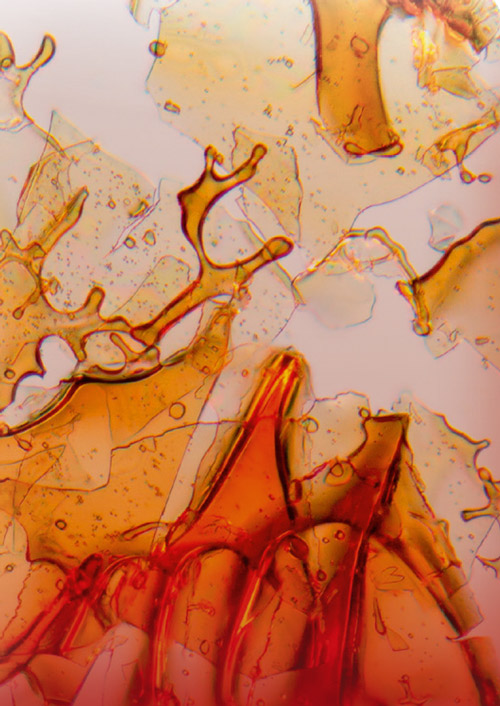 Iron (chemical symbol Fe) is a transition metal and is the fourth most common element on the earth's surface. In its natural form, it is usually present as a bivalent (Fe2+) or trivalent (Fe3+) cation, most commonly in the form of iron ore. This includes magnetite (magnetite, Fe304), haematite (kidney ore, Fe2O3), pyrrhotite (magnetic pyrites, FeS), iron pyrite (fool's gold, FeS2) and siderite (iron spar, FeCO3). Foods contain iron in various forms:
Iron (chemical symbol Fe) is a transition metal and is the fourth most common element on the earth's surface. In its natural form, it is usually present as a bivalent (Fe2+) or trivalent (Fe3+) cation, most commonly in the form of iron ore. This includes magnetite (magnetite, Fe304), haematite (kidney ore, Fe2O3), pyrrhotite (magnetic pyrites, FeS), iron pyrite (fool's gold, FeS2) and siderite (iron spar, FeCO3). Foods contain iron in various forms:
- Haem iron s in meat and sausages. The organically bound haem iron dissolves particularly easily, is easily absorbed into the intestinal cells and the human body therefore makes particularly good use of it. The availability of iron from meat and sausages is correspondingly high at 20 %.
- Non-haem iron can be found in all plant-based foods. It primarily concerns inorganic trivalent iron (Fe3+) and to a lesser extent also bivalent iron (Fe2+). Trivalent iron is formed in the upper small intestine, the site of iron absorption, slightly antisoluble complexes and needs to be converted into bivalent iron before absorption. This explains the poor usability of trivalent iron. Inorganic bivalent iron, in contrast, can be better used by the human body since it is more soluble and is directly absorbed by the intestines. However, a range of plant-based ingredients inhibit the absorption of iron, including fibre from grains and vegetables, which limit the availability. Therefore, an average of only around 5 % of iron from plant-based foods can be used by the body.
Functions of iron
Iron belongs to the group of essential trace elements. With a total body store of 3-5 g, it is the most important trace element in the human body in terms of quantity. It is present here in a protein-bound form, mostly associated with haem. The function of iron is wide-ranging and includes:
- Formation of blood. Iron is significantly involved in the production of the red blood pigment haemoglobin and in this way contributes to the normal formation of haemoglobin and red blood cells. It is only with a sufficient supply of iron that the body is provided with enough red blood cells for the transportation of oxygen. Iron is therefore rightly labelled as an “elixir of life” by contributing to normal transportation of oxygen in the body.
- Energy metabolism. Iron is a component of enzymes, which generate mitochondrial energy and as such makes a contribution to a normal energy metabolism.
- Metabolism of the nerves. With its involvement in the formation of blood, oxygen transport and energy metabolism, iron contributes to normal cognitive function and to the reduction in tiredness and fatigue.
- Immune function. Certain immune system defence cells are dependent on a sufficient supply of iron. The trace element thus makes a contribution to the normal functioning of the immune system.
- Cell division. Several enzymes involved in cell proliferation are dependent on iron. The trace element is therefore performs a function in cell division.
Useful information.
- Vitamin C boosts the utilisation of iron from plant-based foods. This is of particular interest for people with a vegetarian diet.
Information on production technology
- INTERCELL Pharma produces products with organically bound iron. The iron/amino acid complex used makes its way through the stomach passage unharmed; irritation of the stomach lining, caused by aggressive free iron ions, which are released by customary inorganic iron salts in the stomach, ceases.
Iron is only released out of the amino acid bond in the small intestine. The iron can therefore be directly absorbed by the intestinal cells and reach the blood which guarantees especially good utilisation.
© Intercell Pharma GmbH



